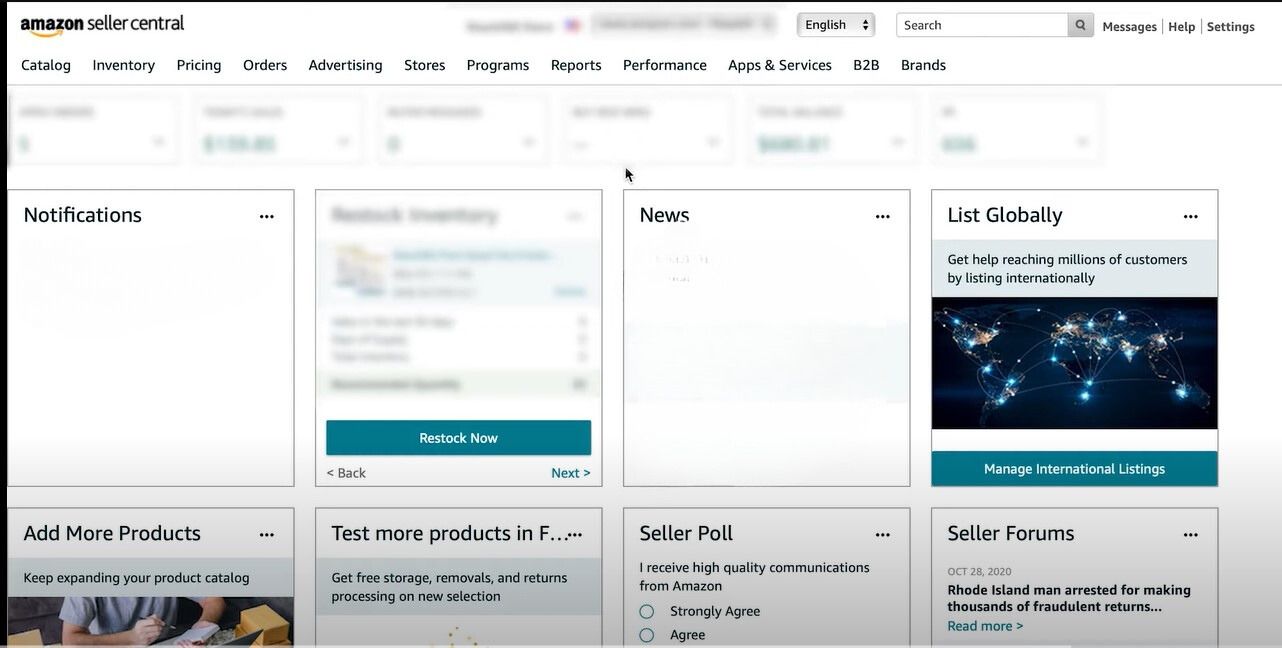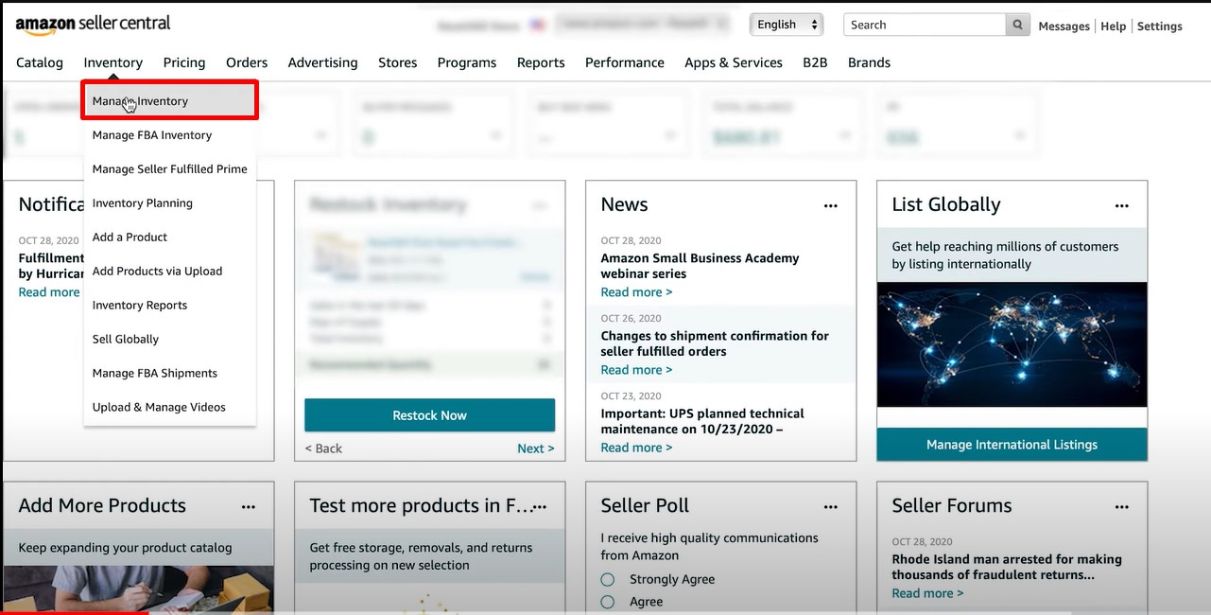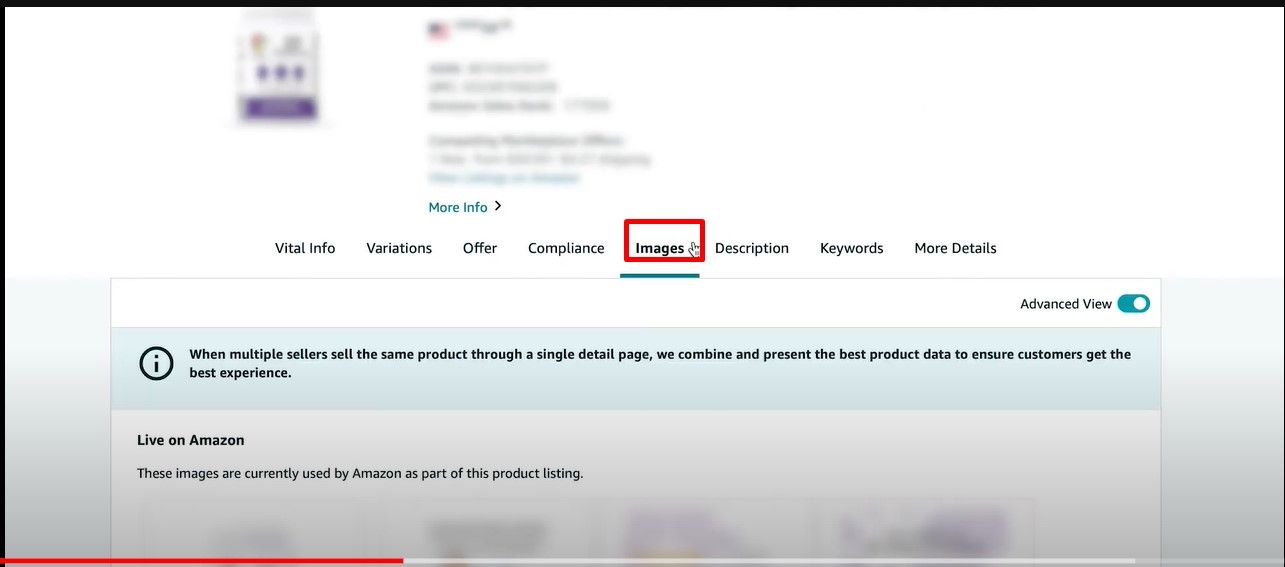In the bustling world of e-commerce, the saying “A picture is worth a thousand words” takes on a whole new level of significance. It’s here that the art and science of product photography come into play, especially for those selling their wares on Amazon. In this introductory section, we’ll delve into the crucial role that visuals play in the world of e-commerce, why product presentation is of paramount importance online, and how to set the stage for successful Amazon product photography.
Quick Guide:
- What Is Amazon Product Photography
- How Does Amazon Product Photography Increase Conversion Rates
- How to Take Pictures for Amazon
- How to Add Photos to Amazon Product Listing
- Why Amazon Product Photography Is So Important
- Should You Hire a Professional Product Photographer?
What Is Amazon Product Photography
Amazon product photography is a specialized branch of commercial photography that focuses on creating high-quality images of products specifically for listings on the Amazon platform. These product images are designed to showcase items in a visually appealing and informative manner, helping potential customers make informed purchasing decisions. In essence, Amazon product photography is the art of capturing, editing, and presenting products through images to attract, engage, and convert online shoppers.
Types of Amazon Product Photography
Product-only Photography
This type involves capturing clear, high-resolution pictures of the product against a neutral background, typically white. These images focus solely on the product, providing potential buyers with a detailed view of its features, design, and specifications. Product-only photography is essential for fulfilling Amazon’s image requirements and offering a straightforward representation of the item.
Lifestyle Photography
Lifestyle images depict the product in real-life scenarios, showing how it can be used or integrated into a customer’s daily life. These images help potential buyers visualize the product’s practicality and benefits, making it easier for them to connect with the item on a personal level.
Infographic or Feature-focused Photography
Infographic images highlight specific features or attributes of the product. These may include close-ups of details, diagrams, or images with text overlays explaining key product information. Infographics provide a quick and clear way to convey essential details.
Group or Variation Photography
For products available in multiple colors, sizes, or configurations, group or variation photography is vital. These images display all available options within a single shot, allowing customers to see the range of choices at a glance.
Packaging and Unboxing Photography
Particularly relevant for items in the beauty, electronics, and luxury goods categories, this type of photography showcases the product’s packaging and the unboxing experience.
360-Degree Photography
These images provide an interactive view of the product, allowing customers to rotate the item and examine it from every angle. This type of photography can be especially helpful for products with intricate details or multiple features.
Video Content
While not strictly photography, videos are an integral part of Amazon product listings. They can include product demonstrations, how-to guides, or customer testimonials. Videos engage and dynamically inform potential buyers.
Objectives of Amazon Product Photography
The primary objectives of Amazon product photography are as follows:
Inform and Educate
Product images should provide essential information about the product, including its appearance, size, color, and features. Customers rely on these images to make informed purchase decisions.
Attract and Engage
High-quality, visually appealing images capture the attention of online shoppers and encourage them to explore the product further.
Build Trust
Clear, well-lit, and professionally presented images instill confidence in the product’s quality and authenticity. They help customers trust the seller and the item they are considering.
Differentiate and Persuade
Effective product photography sets your listing apart from competitors. It highlights the unique selling points of the product and persuades customers to choose your offering.
Enhance the Shopping Experience
Lifestyle and usage images can enhance the customer’s shopping experience by helping them visualize how the product will fit into their lives.
Meet Amazon Guidelines
Amazon has specific image requirements that must be met for each product category. Adhering to these guidelines is necessary to ensure your products can be listed and featured prominently on the platform.
How Does Amazon Product Photography Increase Conversion Rates
When it comes to e-commerce, Amazon product photography plays a pivotal role in driving conversion rates—turning casual browsers into satisfied customers. This section explores the underlying psychology of visual content in marketing, demonstrates the real impact of quality product photos, and provides compelling statistics on how photography significantly boosts conversion rates on the Amazon platform.
The Psychology of Visual Content in Marketing
One of the most effective marketing tools is visual content because it taps into the fundamental way our brains work. It’s been said that we’re visual creatures, and research backs this up. Here’s how the psychology of visual content influences purchase decisions:
Immediate Impression
When a potential customer lands on an Amazon product page, their first impression is often formed by the images. Text takes much longer for the brain to process than visual information, and these initial milliseconds can make or break a sale.
Emotional Connection
High-quality images can evoke emotions. This can be through aspirational lifestyle shots or by conveying trust and credibility through professional product images. Emotions influence purchase decisions, and visuals are a powerful conduit for that.
Information Absorption
People tend to retain visual information better than text. This means that the details and features of a product are more likely to stick in a customer’s mind when presented visually.
Reduced Cognitive Load
Clear, informative images reduce the cognitive load on customers. They don’t have to wade through paragraphs of text to understand the product, making the shopping experience more enjoyable and efficient.
Visual Storytelling
Visuals have the power to tell a story. They can show the benefits, uses, and solutions a product offers, all without the need for lengthy descriptions.
Demonstrating the Impact of Quality Product Photos
The impact of quality product photos can’t be overstated. Here are some ways in which they make a difference:
Improved Perceived Value
When products are presented professionally and look their best, customers are more likely to perceive them as valuable and of higher quality. This perception can lead to higher price tolerance and increased sales.
Reduced Return Rates
High-quality images accurately represent the product, reducing the chances of customers receiving something different from what they expected. As a result, return rates decrease, leading to cost savings and better customer satisfaction.
Increased Click-Through Rates
Well-crafted images pique the curiosity of potential buyers, encouraging them to click on the product listing to learn more. This increased interest translates into higher click-through rates, a crucial step in the conversion process.
Enhanced Trustworthiness
Quality images help establish trust in your brand and the authenticity of your products. When customers trust what they see, they’re more likely to proceed with the purchase.
Higher Conversion Rates
Ultimately, the goal of Amazon product photography is to boost conversion rates. By creating a visually appealing and informative shopping experience, customers are more likely to complete their purchase, contributing to higher conversion rates.
Statistics on Conversion Rate Improvement through Photography
To emphasize the significance of photography in e-commerce, consider these statistics:
- According to Amazon, adding at least one image to a product listing can increase click-through rates by 80%.
- E-commerce giant eBay reported that products with better-quality images sell 5% to 12% more.
- A study by Shopify found that 50% of online shoppers believe that high-quality product photos are more critical than product descriptions or reviews.
- A case study by Virtusize revealed that improving image quality led to a 30% increase in conversions for an online fashion retailer.
How to Take Pictures for Amazon
Taking pictures for Amazon is a crucial part of creating an effective product listing. To ensure your images meet Amazon’s standards and make your products stand out, follow these key steps:
Amazon’s Product Photo Requirements and Guidelines
Before you start taking pictures, familiarize yourself with Amazon’s image requirements and guidelines. These rules can vary depending on the category of your product, but some general principles include:
- Image size: Amazon recommends a minimum of 1000 pixels on one side for zoomable images.
- Image format: Use JPEG, PNG, GIF, or TIFF formats.
- Background: A clean, white background is typically required for the main image. For additional images, you can use backgrounds that complement the product without distracting from it.
- File naming: Use descriptive file names for your images to make it easier to organize and upload them.
- Prohibited elements: Amazon has rules against adding watermarks, promotional text, borders, and additional graphics to images.
- Number of images: Amazon often has specific requirements for the number of images you need to provide, including the main image, secondary images, and lifestyle images for certain categories.
Equipment and Tools Needed for Product Photography
To capture professional-quality product images for Amazon, you’ll need the right equipment and tools. Here’s what you should have:
- Camera: You can use a DSLR or mirrorless camera, but even a high-quality smartphone camera can work well if used correctly.
- Tripod: A stable tripod is essential to prevent camera shake and ensure consistent framing.
- Lighting: Lighting is crucial for product photography. You can use natural light, studio lighting, or a combination of both. Soft, diffused lighting is often preferred to reduce harsh shadows.
- Backdrop or Sweep: A white backdrop or sweep will help you achieve the clean, uncluttered look required for the main product image.
- Reflectors and Diffusers: These can help control and manipulate light to reduce glare and improve product visibility.
- Props and Styling Tools: Depending on your product, you may need props, stands, or other styling tools to showcase it effectively.
- Editing Software: Post-processing software like Adobe Photoshop or Lightroom can help enhance and edit your images.
Tips for Setting Up a Home Studio for Product Photography
Creating a functional home studio for product photography is essential for consistency and convenience. Here are some tips for setting up your space:
- Choose a dedicated area with good natural light, if possible, or invest in continuous lighting equipment.
- Set up a sturdy table or surface for your products.
- Use a neutral-colored wall or seamless backdrop for a clean background.
- Consider a shooting table or a product photography tent to control reflections and lighting.
- Arrange your equipment and props in an organized manner for easy access.
Step-by-Step Guide to Capturing Product Images for Amazon
Here’s a step-by-step guide to capturing product images for Amazon:
- Clean and prepare your product: Ensure the product is clean, free of smudges, and in perfect condition.
- Set up your studio: Arrange your backdrop, lighting, camera, and props as needed.
- Position your camera: Secure your camera on a tripod and ensure it’s level and stable.
- Choose the right angles: Experiment with different angles to showcase the product’s features. Capture close-ups, side views, and other relevant perspectives.
- Light your product: Use diffused, soft lighting to illuminate the product evenly. Avoid harsh shadows and reflections.
- Frame your shots: Pay attention to composition, ensuring the product is centered and well-framed. Follow Amazon’s guidelines for the main image.
- Capture multiple shots: Take a variety of images to showcase different product details. Include shots of labels, logos, or any unique features.
- Edit and retouch: Use post-processing software to adjust exposure, color balance, and sharpness. Remove any imperfections or distracting elements. Familiarize yourself with how to full screen on Mac as only in full screen can you achieve uninterrupted editing experience, making sure each product image is edited to the highest standard.
- Resize and format: Ensure your images meet Amazon’s requirements in terms of size, format, and naming.
- Upload your images: Organize your product images as per Amazon’s guidelines and upload them to your product listing.
How to Add Photos to Amazon Product Listing
Adding photos to your Amazon listing is a critical aspect of creating an appealing and informative listing that can drive sales. Here’s a guide on how to upload and manage product photos, optimize them for Amazon listings, and best practices for organizing and labeling your product images:
Uploading and Managing Product Photos on Amazon:
- Log in to your Amazon Seller Central account.

- Go to the “Inventory” tab and select “Manage Inventory.”

- Locate the product listing you want to edit or create a new listing.
- In the “Images” section, you can add images for your product.

Optimizing Images for Amazon Listings:
Optimized images are more likely to attract potential buyers and enhance your product’s visibility. Here are some tips for optimizing product images on Amazon:
- Use High-Quality Images: Make sure that your images are of high resolution, well-lit, and clear. Amazon recommends a minimum of 1000 pixels on one side for zoomable images.
- Background: The main image should have a clean, white background. For additional images, you can use complementary backgrounds that enhance the product’s appeal without being distracting.
- Main Image: The main image should showcase the product as the customer would receive it. It should be the product against a white background, and it must not include additional objects or text.
- Secondary Images: Use secondary images to provide different angles, close-ups, and lifestyle shots that help customers understand the product better.
- Image Consistency: Maintain consistency in image size, aspect ratio, and background color throughout your product images.
- Image Compression: Compress your images to reduce file size while maintaining quality. This can help improve page loading speed.
- File Format: Save your images in common formats like JPEG, PNG, or TIFF.
Best Practices for Organizing and Labeling Product Images:
Proper organization and labeling of your product images are essential for efficient management and presentation. Follow these best practices:
- Descriptive Filenames: Name your image files descriptively to easily identify the product they represent. For example, “brand-productname-color-angle.jpg.”
- Image Order: Organize your images logically. The primary image with a white background should be the first one, followed by secondary images showcasing different angles and features.
- Consistent Style: Maintain a consistent style and format for all your product images, ensuring they align with your brand’s visual identity.
- Image Sets: Group related images into sets. For example, you can create sets for lifestyle images, close-ups, or images showcasing product variations.
- Save Backups: Keep backup copies of your original, unedited images in case you need to make future changes.
- Keep It Neat: Avoid cluttering your product images with watermarks, text, or graphics that don’t add value.
- Optimize for Mobile: Remember that many customers shop on Amazon using mobile devices, so ensure your images are optimized for smaller screens.
- Utilize Amazon Image Upload Tools: Amazon provides tools for bulk image uploads and management, making it easier to update product listings with multiple images.
Why Amazon Product Photography Is So Important
Product photography on Amazon is a crucial element of your online business strategy. It goes beyond merely showcasing your products; it directly impacts your brand’s perception, influences customer trust, and significantly influences buying decisions. Here’s why Amazon product photography is crucial:
The Connection Between Image Quality and Brand Perception
The quality of your product images directly reflects on your brand. Here’s how:
First Impressions Matter
Often, a potential customer’s initial interaction with your brand comes through your product images. High-quality, professional images create a positive first impression, conveying that your brand is reputable, trustworthy, and committed to quality.
Perceived Value
Well-photographed products appear more valuable. When customers see clear, well-lit images, they’re more likely to attribute higher quality and value to the products, allowing you to potentially command higher prices.
Consistency
Consistent image quality across all your products builds brand consistency, which is essential for recognition and trust.
Differentiation
In a crowded marketplace like Amazon, exceptional images set your brand apart from competitors. They can grab the attention of shoppers browsing through similar products and compel them to explore your listings further.
Impact on Customer Trust and Confidence
Product images significantly influence customer trust and confidence in the following ways:
Transparency and Authenticity
Clear, detailed images provide transparency and authenticity. Customers can see exactly what they’re buying, reducing the risk of disappointment upon delivery. This transparency builds trust.
Reduced Returns
When customers trust that the product matches the images, return rates decrease. Fewer returns lead to cost savings and improved customer satisfaction.
Professionalism
Professional product images convey professionalism and attention to detail. This professionalism extends to your brand, making customers more comfortable doing business with you.
Brand Reputation
High-quality images create a positive customer experience, which contributes to your brand’s reputation. Customers who are happy with your products are much more likely to recommend them to others and write positive reviews.
How Product Photos Influence Customer Buying Decisions
Product images play a pivotal role in customer buying decisions:
Visual Appeal
Well-presented products are visually appealing and draw customers in. Aesthetic and inviting images capture attention, making potential buyers more likely to explore your product in detail.
Information Delivery
Images provide essential information about the product’s appearance, features, and use. Customers often rely on images to understand the product quickly and make an informed decision.
Emotional Connection
Lifestyle images, when used effectively, help customers to develop an emotional connection with the product. Shoppers can envision how the item fits into their own lives, creating desire and motivation to purchase.
Comparison and Evaluation
Customers often compare products visually. Detailed images and close-ups allow them to evaluate different options and choose the product that best meets their needs.
Final Decision Point
The images are often the last point of contact before the “Add to Cart” button. Compelling images can tip the balance, convincing potential buyers to make a purchase.
Should You Hire a Professional Product Photographer?
When it comes to product photography for your business, deciding whether to hire a professional photographer or undertake the task yourself is a critical choice. In this section, we’ll explore the pros and cons of hiring a professional photographer, key factors to consider when making your decision, how to find and collaborate with a professional, and budget considerations.
Pros and Cons of Hiring a Professional Photographer:
Pros of Hiring a Professional Photographer:
- Expertise: Professional photographers have the knowledge, skills, and experience to capture high-quality product images that align with industry standards.
- Time Efficiency: Hiring a professional photographer frees up your time to focus on other aspects of your business, such as product marketing, development, and customer service.
- Consistency: Professionals ensure that your product images are consistent in terms of quality, style and brand identity, which is crucial for building brand recognition.
- Quality Equipment: Professional photographers have access to top-notch camera equipment, lighting, and editing software, resulting in better images.
- Creative Direction: They can provide creative input and suggestions to make your product images stand out.
Cons of Hiring a Professional Photographer
- Cost: Professional photography services can be expensive, which may strain your budget, particularly if you have a large number of products.
- Scheduling: Coordinating with a photographer’s schedule can sometimes be challenging, causing delays in your product listing updates.
Factors to Consider When Deciding Between DIY and Professional Photography
When deciding between DIY and professional photography, consider the following factors:
- Budget: Analyze your budget and determine how much you can allocate to photography. Consider the return on investment (ROI) that high-quality images can bring.
- Quantity: The number of products you have may influence your decision. If you have a few products, you might opt for professional photography, while DIY could be more cost-effective for a smaller inventory.
- Time: Consider your available time and whether you can dedicate it to learning photography, setting up a home studio, and editing images.
- Experience: Your level of photography experience plays a significant role. If you have the skills and equipment, DIY may be a viable option.
- Brand Image: Evaluate the importance of brand consistency and image quality in your industry. High-end products may require professional images for credibility.
- Competitiveness: Research your competitors’ product listings. If they have professional images, you may need them to stay competitive.
Finding and Working with a Professional Product Photographer
To find and collaborate with a professional product photographer:
- Search Online: Look for photographers in your area or those who specialize in product photography. Websites, directories, and social media platforms are valuable resources.
- Portfolio Review: Examine the photographer’s portfolio to ensure their style aligns with your brand.
- Discuss Your Needs: Contact potential photographers and discuss your project’s requirements, expectations, and budget.
- Set Clear Terms: Define the scope of work, deadlines, and pricing in a formal agreement or contract.
Budget Considerations for Hiring a Photographer
When budgeting for a professional photographer:
- Get quotes from multiple photographers to compare pricing.
- Consider the value and ROI that professional images will bring to your business.
- Allocate a budget that allows for a balance between quality and cost-effectiveness.
- Be transparent with the photographer about your budget constraints to find a solution that works for both parties.
Conclusion
Amazon product photography is a cornerstone of success in the competitive world of e-commerce. High-quality images not only provide customers with a visual representation of your products but also serve as a direct reflection of your brand’s reputation. They build trust, enhance perceived value, and play a pivotal role in influencing customer buying decisions. The investment in professional product photography, when aligned with Amazon’s guidelines and your brand’s goals, can yield significant returns by improving conversion rates, reducing returns, and setting your products apart in a crowded marketplace.
Whether you choose the DIY route or hire a professional photographer, the decision should be rooted in a careful assessment of your budget, product volume, and brand image. Regardless of the approach you take, it’s essential to maintain a commitment to image quality and consistency. Ultimately, well-executed Amazon product photography is a strategic investment that can empower your brand and drive success in the ever-evolving landscape of online retail.




